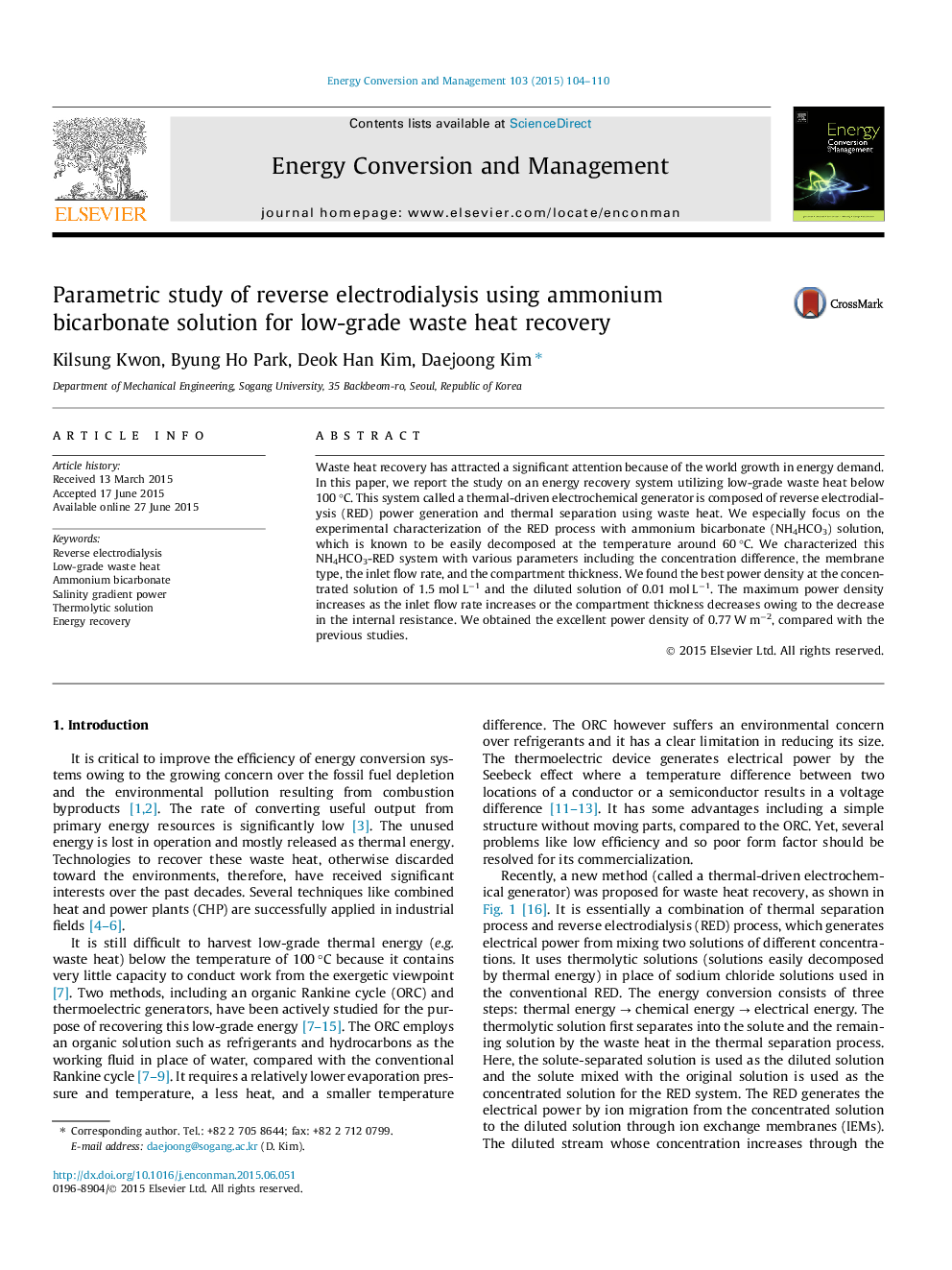| Article ID | Journal | Published Year | Pages | File Type |
|---|---|---|---|---|
| 771700 | Energy Conversion and Management | 2015 | 7 Pages |
•We characterized the influence of various parameters on the NH4HCO3-RED system.•We found the best power density at the concentrated solutions of 1.5 mol L−1 and the diluted solution of 0.01 mol L−1.•We obtained the higher power density of 0.77 W m−2 than previous studies.
Waste heat recovery has attracted a significant attention because of the world growth in energy demand. In this paper, we report the study on an energy recovery system utilizing low-grade waste heat below 100 °C. This system called a thermal-driven electrochemical generator is composed of reverse electrodialysis (RED) power generation and thermal separation using waste heat. We especially focus on the experimental characterization of the RED process with ammonium bicarbonate (NH4HCO3) solution, which is known to be easily decomposed at the temperature around 60 °C. We characterized this NH4HCO3-RED system with various parameters including the concentration difference, the membrane type, the inlet flow rate, and the compartment thickness. We found the best power density at the concentrated solution of 1.5 mol L−1 and the diluted solution of 0.01 mol L−1. The maximum power density increases as the inlet flow rate increases or the compartment thickness decreases owing to the decrease in the internal resistance. We obtained the excellent power density of 0.77 W m−2, compared with the previous studies.
